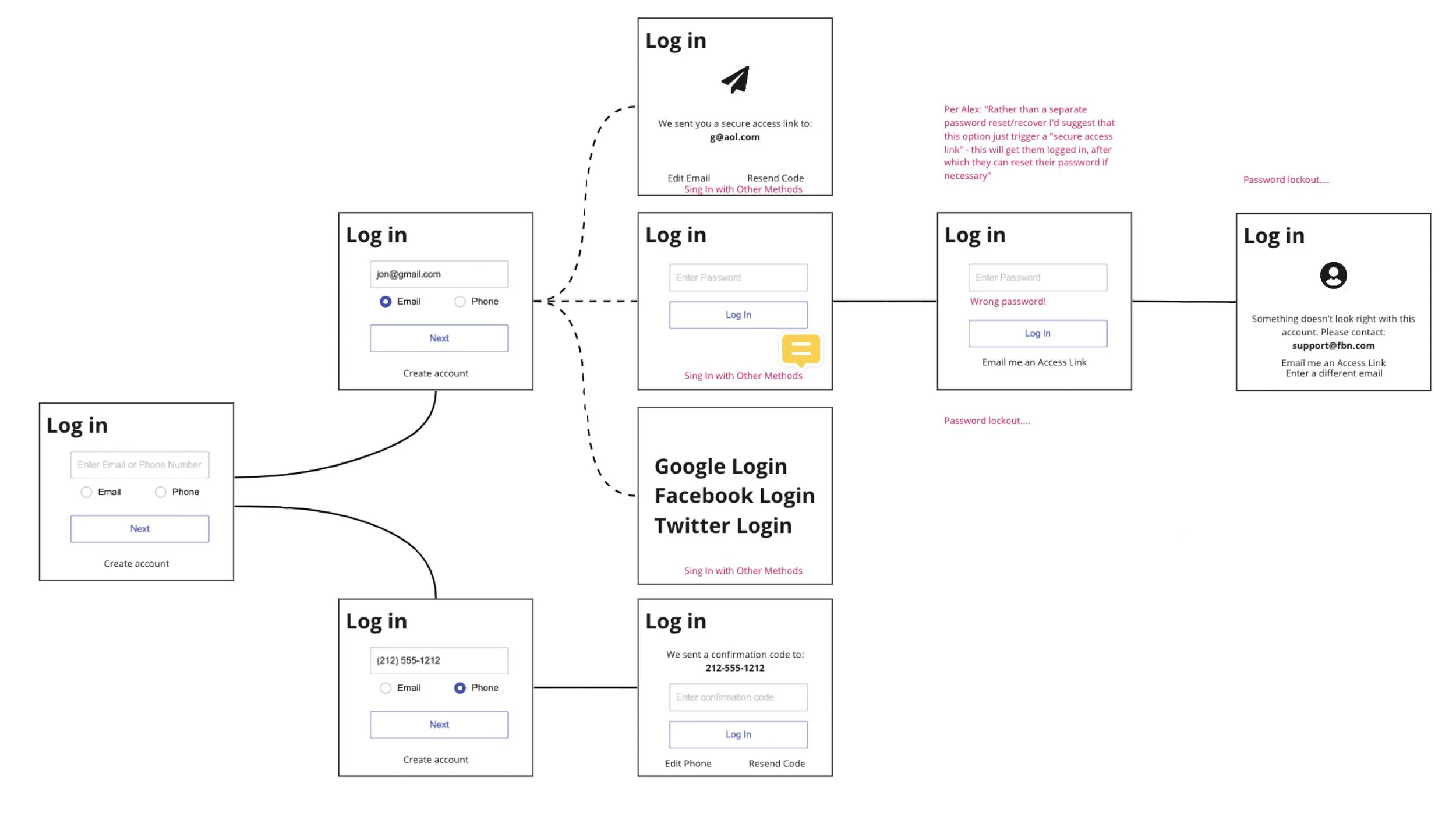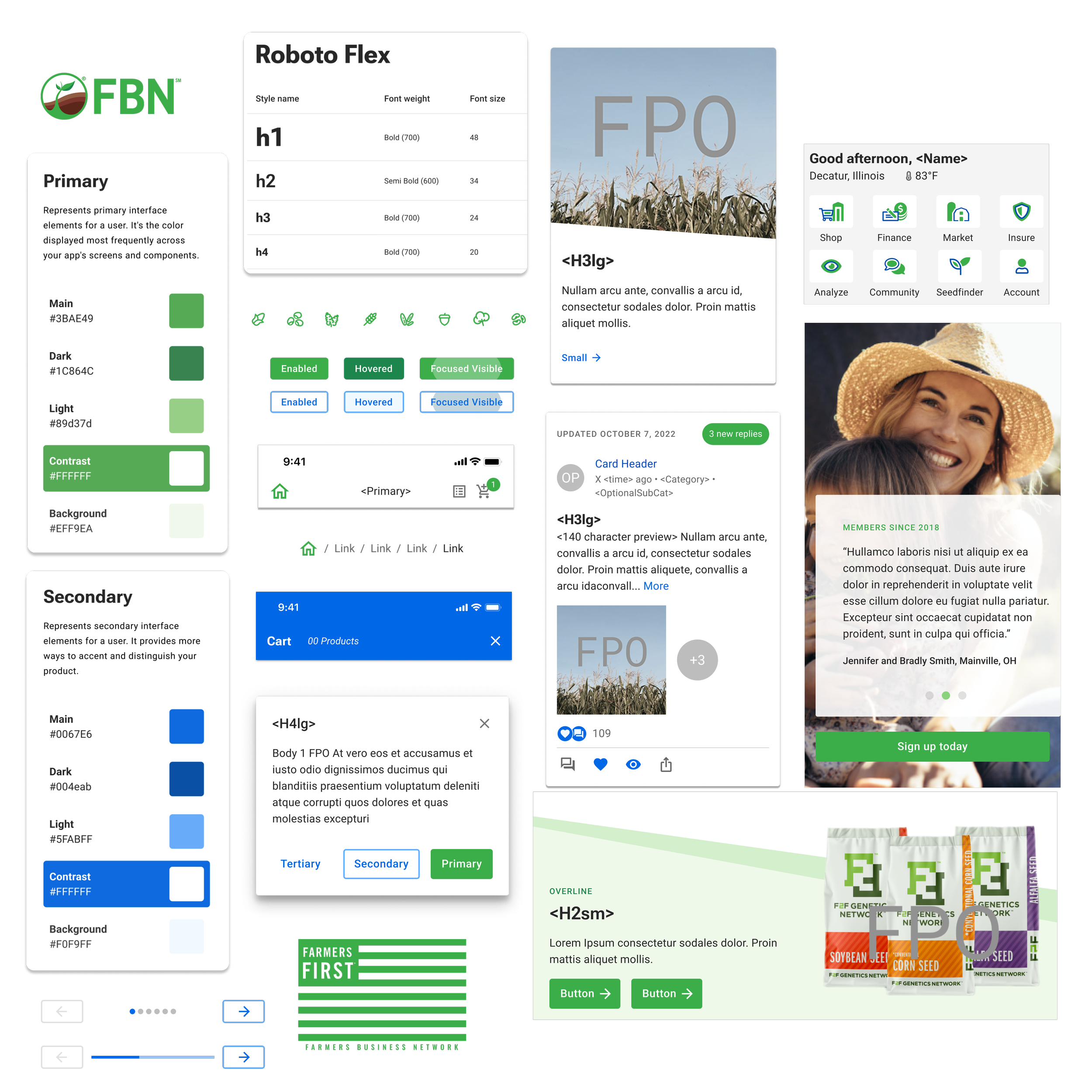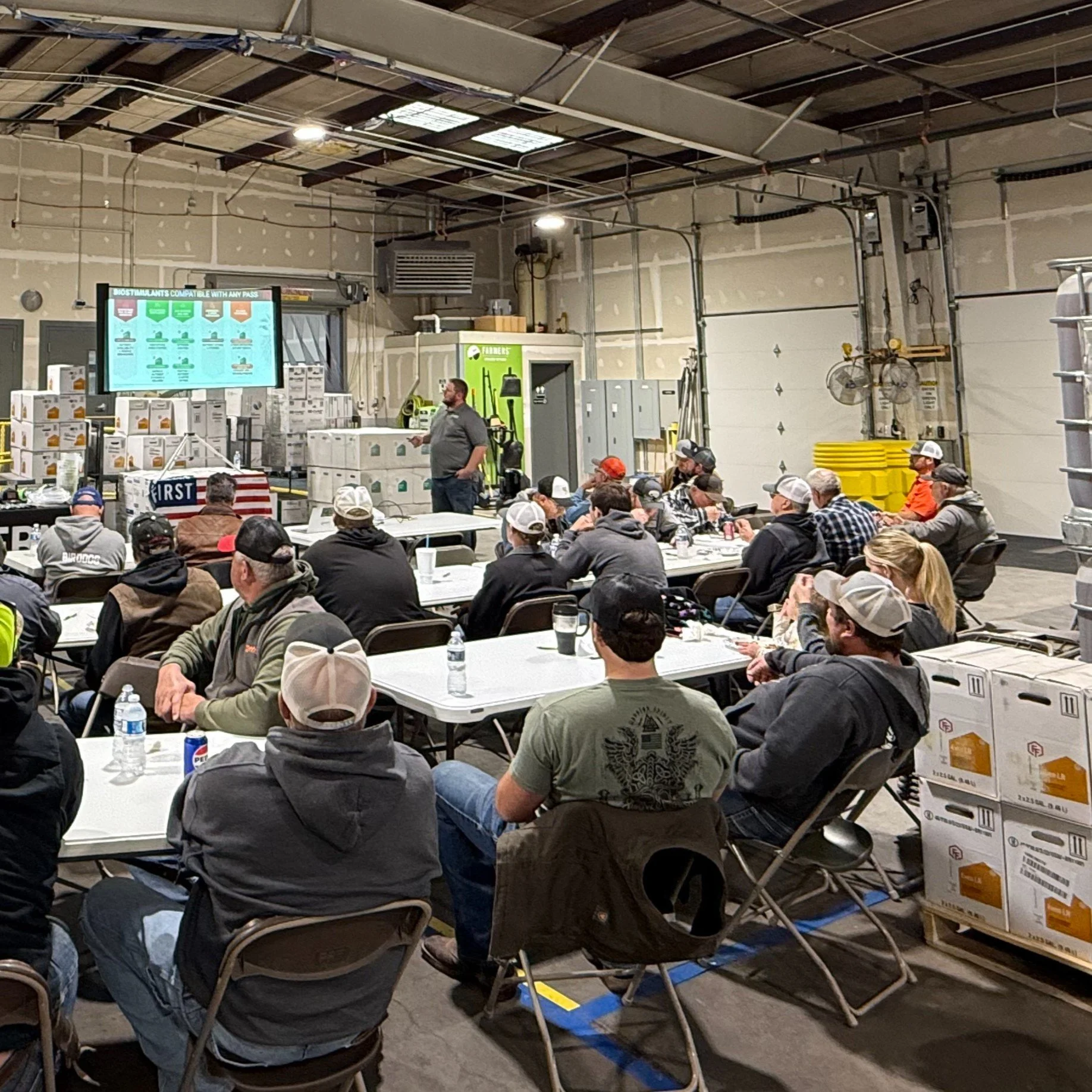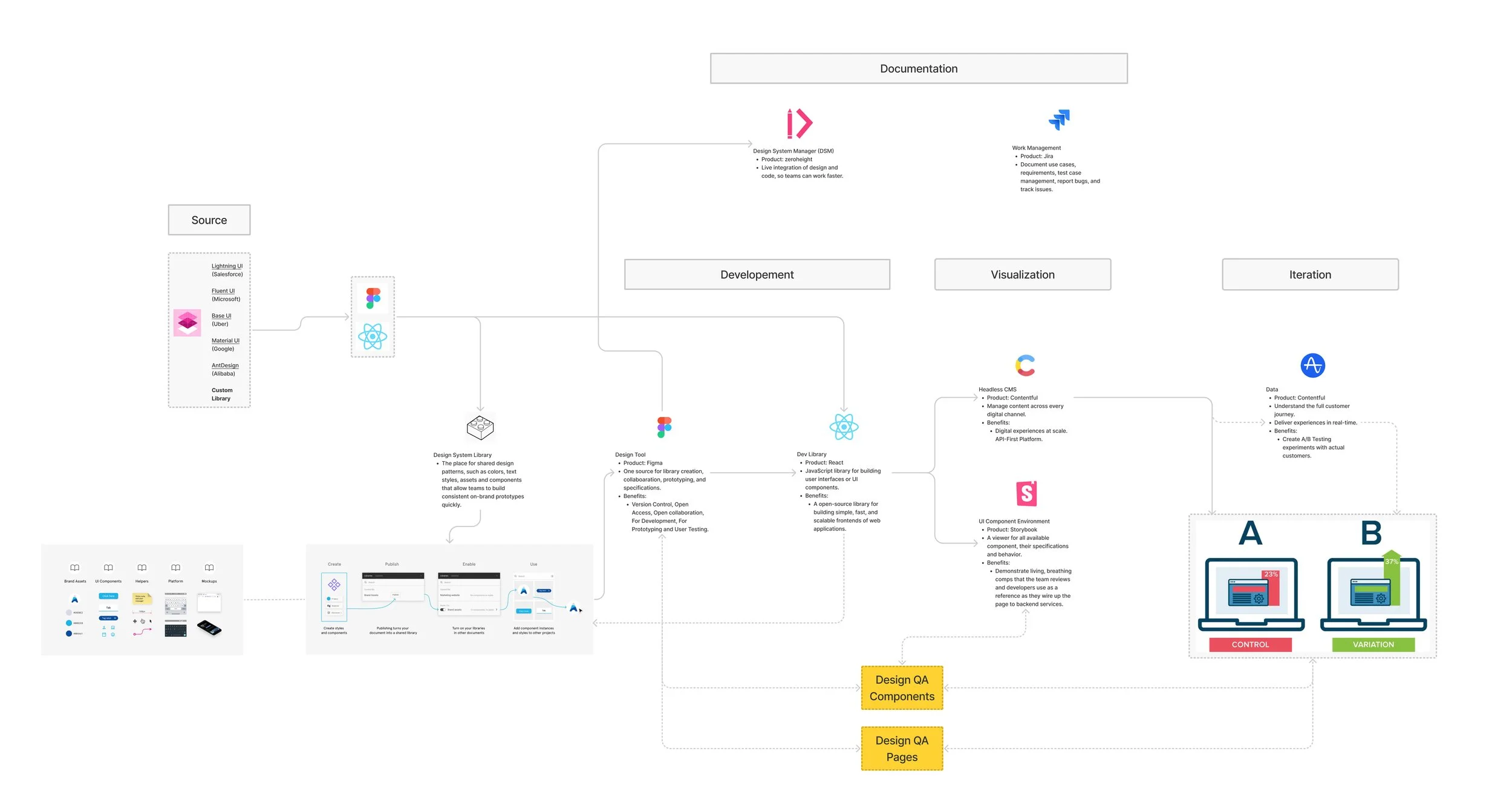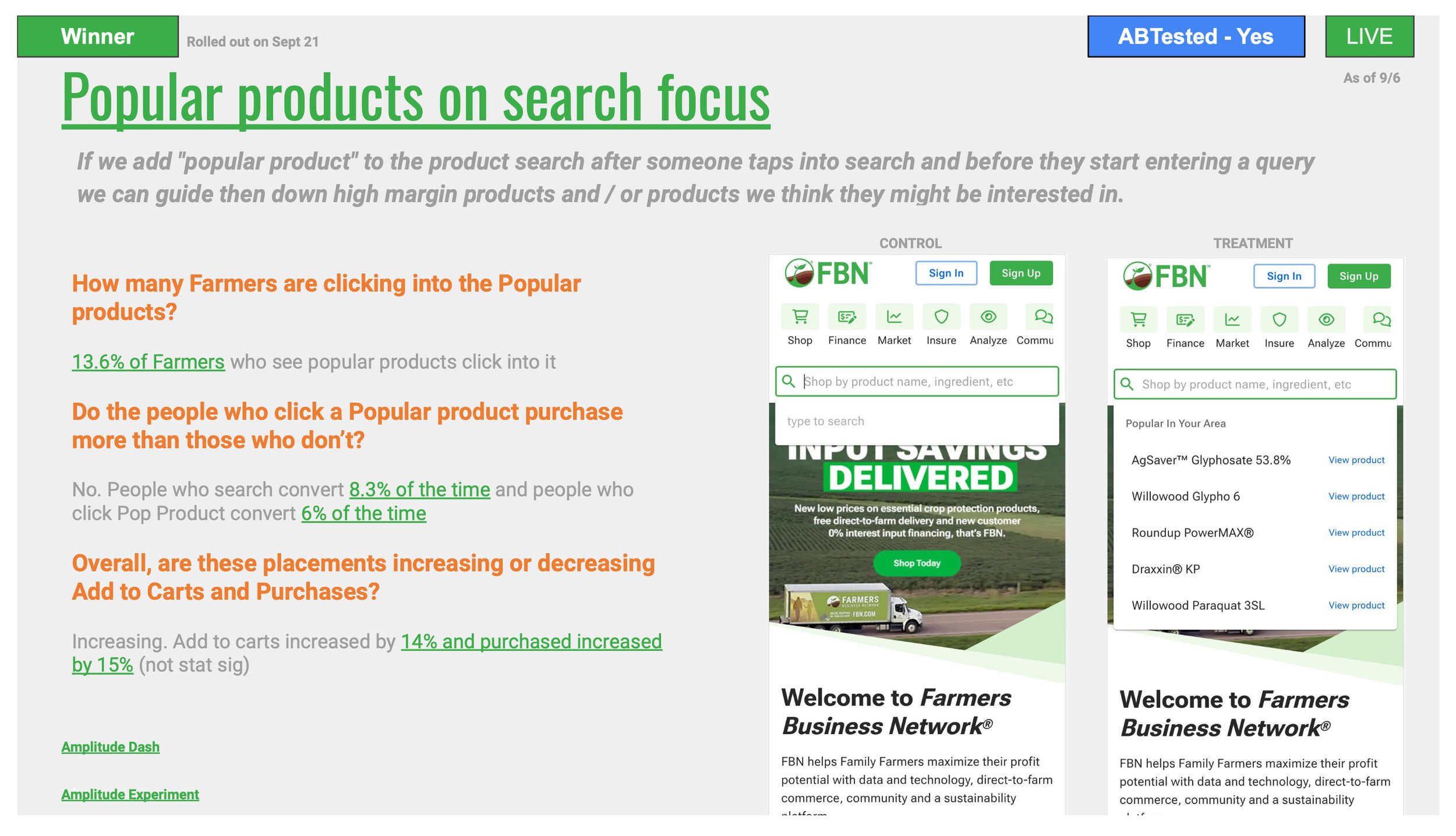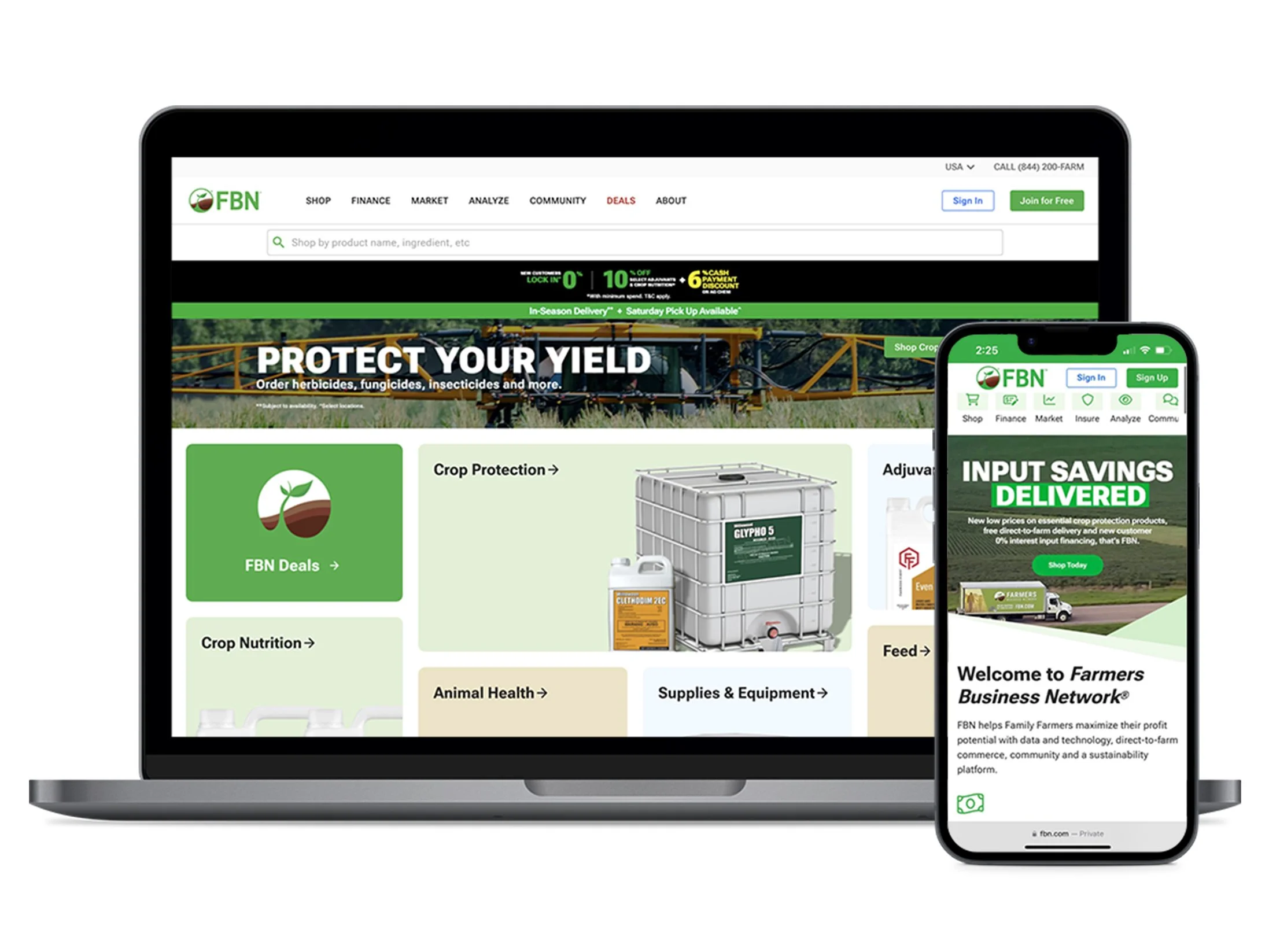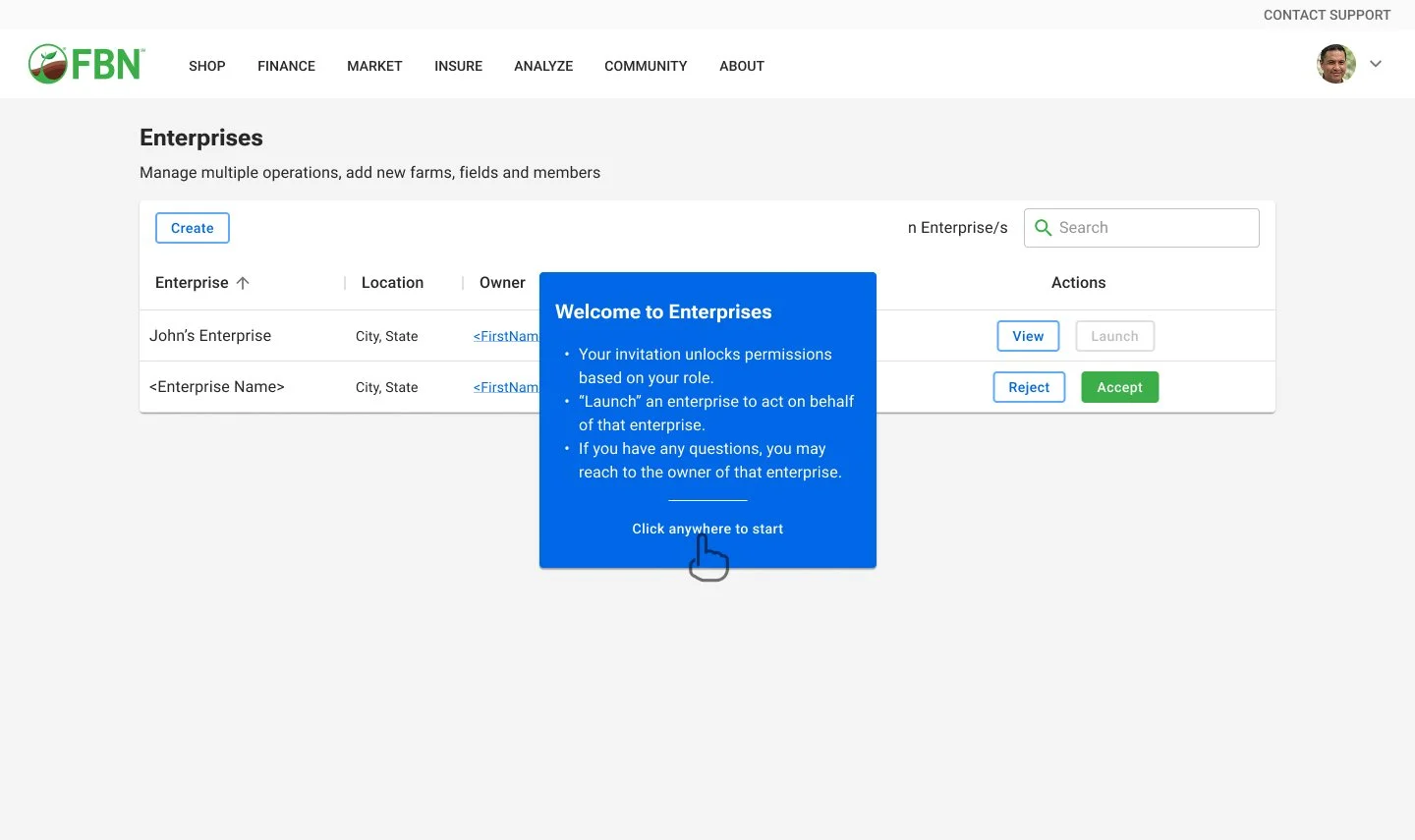Scaling FBN From Friction to a Unified, Self-Serve Platform
Role: Senior Product Design Manager, Growth & Platform
Years: 2020–2024
Team: 1 PM, 1 Eng Lead, 1 System Designer, 1 Associate Designer
About Farmers Business Network (FBN)
FBN is a digital platform built for independent farmers, offering ecommerce, financial services, crop inputs, and community tools. Their mission is to level the playing field by giving farmers the same data, insights, and buying power as big agribusiness.
Overview
I joined FBN as their first platform and growth designer. Growth & Platform was where the full FBN experience converged, and where the friction really showed. Our job was to design a system that felt fast, trustworthy, and human at once. What follows is how we tackled that.
The work spanned onboarding, infrastructure, modular tooling, and team alignment. It involved multiple teams, shifting strategy, and a push toward self-service at scale.
My Role
Over four years, I helped transform Farmers Business Network (FBN) from a lead-gen paywalled tool into a scalable, AI-informed, self-serve platform. I led platform design across login, onboarding, forums, access, and growth systems, helping over 85,000 farmers do business faster. Our north star: build once, reuse everywhere, and earn trust at every step.
The unified FBN interface brings together modular marketing content, personalized notifications, community tools, and e-commerce recommendations to drive action and deepen engagement.
AT A GLANCE:
growth in membership
500%
in created revenue
$Millions
increase in self signups
85%
year-over-year increase
in online signups
30%
increase in product
page visits
43%
cart attachment conversion within a year
50%
increase in 8-Week member retention
25%
Phase 1: Foundation (2020–2021)
The Problem:
FBN’s $700 subscription wall blocked discovery and stalled signups. The original stack lacked onboarding logic, federated auth, or design system, creating confusion and steep drop-off. Each vertical had its own form, database, and UI, meaning users were treated as “new” every time they moved across services. That redundancy created frustration and friction.
The legacy pricing model of $700 and no self-serve flow, created more drop-off than discovery, costing millions in missed opportunities.
Legacy signup experience prioritized lead generation over usability.
Lessons From Early Research
Farmers said their experience didn’t feel like “one company.”
Internal support was spread thin during an aggressive growth phase.
We were losing SEO and inbound traffic due to lack of structured, reusable content.
Infrastructure was fractured, fixing it was key to supporting self-signup.
My Work:
Led teardown of login flows, introduced federated authentication.
Built FBN’s first atomic design system, mapped to a parallel React library.
Created page components and templates that became platform-wide defaults.
Centralized fragmented forms into a shared schema and unified onboarding flow, enabling cross-vertical reuse of data and reducing repeated input.
Login architecture map used to align CX recovery paths, third party auth, and fallback flows with engineering.
Color, type, and components from our foundational system, paired with a React library and documented in Zeroheight to drive adoption.
Mapped hero variants across breakpoints to validate visual consistency, optimize CTA placement, and ensure content alignment from desktop to mobile.
Pat Duncanson, a Minnesota farmer who has been a member of FBN for about five years, was one of the many who praised the redesign and expansion. "Part of their approach to quality data was to attract quantity of data. The bigger pool to work from means the poor data almost weeds itself out now.”
Phase 2: Unlocking Growth (2022–2023)
The Problem:
With self-signup enabled, the next challenge was streamlining exploration, product discovery, and cart attachment. Marketing content was still off-platform, onboarding paths were generic, and users struggled to find what they needed.
This field event reinforced how off-platform our content and onboarding still were. We used insights like this to build IPD components, reduce reliance on in-person walkthroughs, and create scalable, in-product education.
My Work:
Migrated modular components to Contentful CMS to unify branding.
Redesigned onboarding flows based on user intent and product interest.
Built infrastructure for user-generated content across resources and forums, setting the stage for SEO-rich engagement loops.
Ran weekly growth experiments across cart, search, and signup flows.
Tradeoffs and Constraints:
Proposed a personalized onboarding engine, but had to pivot when infra constraints made it unfeasible. We shifted to flag-based modules that could trigger content, toasts, or CTAs via conditional logic.
Shifted homepage from information-first to commerce-first. We initially resisted this merge, hoping to preserve the homepage as a marketing anchor. But shop data showed commerce drove most revenue, and aligning around that priority accelerated conversions.
Mapped FBN’s new content system from creation to iteration. Integrated Contentful CMS to reduce engineering dependency, unify brand voice, and drive SEO through on-platform publishing.
Tailored onboarding based on entry point and user intent. Modular logic allowed FBN to route users by role, product interest, or signup source, reducing noise, boosting activation, and improving flow reuse across business units.
Personalized discovery scaffolding for Day 1 experience. Returning users land on a dynamic, modular layout that prioritized relevance. Showing recently viewed items, shopping tools, and suggested modules based on role, region, and product behavior.
Example growth experiment. We ran targeted A/B tests using Amplitude to understand click-through and conversion behaviors. This experiment increased add-to-cart rates by 14% and showed potential lift in purchases.
Phase 3: Operational Scale (2023–2024)
The Problem:
Growth exposed new complexity. Multi-entity users couldn’t delegate access, roles were unclear and inconsistent. FBN needed tools for managing organizations, roles, and workflows, plus ways to keep users engaged across the platform.
Forums and resource pages existed, but lacked follow mechanics, tags, and trust cues that drive community value and SEO lift.
As FBN expanded into health, insurance, and finance, siloed tools and inconsistent user roles led to overlap and confusion. This image from Farmer2Farmer shows the breadth of services, but that complexity wasn’t yet reflected in the digital experience.
My Work:
Designed a multi-entity access model with role delegation and permission tiers.
Defined UX for forums: tagging, moderation, trust flows.
Introduced tags, comments, subscriptions, and trust mechanics across forums, increasing engagement and surfacing FBN answers in top SEO rankings for ag-specific queries.
Reworked notifications to drive action, not noise.
Piloted FBN’s first AI-driven chatbot, “Norm”, built on GPT‑3.5 and agricultural training corpora, including seed & label data, USDA, and forum content..
Tradeoffs and Constraints:
We never fully implemented AI into forums or product pages, but the opportunity remains for location-aware product recs, peer answers, and topic clustering for long-tail SEO.
Integrated Contentful CMS to reduce engineering dependency, unify brand voice, and drive SEO through on-platform publishing.
Tailored onboarding based on entry point and user intent. Modular logic allowed FBN to route users by role, product interest, or signup source, reducing noise, boosting activation, and improving flow reuse across business units.
Designed a permissions framework and delegation model so managers could assign roles, admins could control access, and Customer Experience teams could troubleshoot without bottlenecks.
Launched FBN’s first AI assistant for crop input questions. This experiment informed future investments in AI-powered CX and helped validate ag-specific NLP feasibility.
The Results
Over my four year tenure we saw a 6X increase in user memberships, an increase in self sign-ups by 85%, an increase of product page visits by 43%, and an increase in 8-week member retention to 25%. The platform generated millions of dollars in revenue, converted 50% of initial signups into successful memberships over a year, and created a 30% year-over-year increase in signups. Moreover, our new modular platform enabled marketing teams to create new pages in minutes, a stark contrast to the previous dependency on engineering that delayed content updates for days.
Why It Matters
FBN was one of the most meaningful chapters of my career. We were enabling independent farmers to navigate volatility with tools once reserved for big ag. What we built made their businesses more viable, not just more usable. It taught me how to design for systems that scale, systems people trust. We turned friction into leverage. That engine is still running today.
Additional Work
-

Driving Sales Efficiency and Reducing IT Costs
-

Simplifying Login and Creating Transactions
-

Increasing Engagement by Simplifying the User Journey
